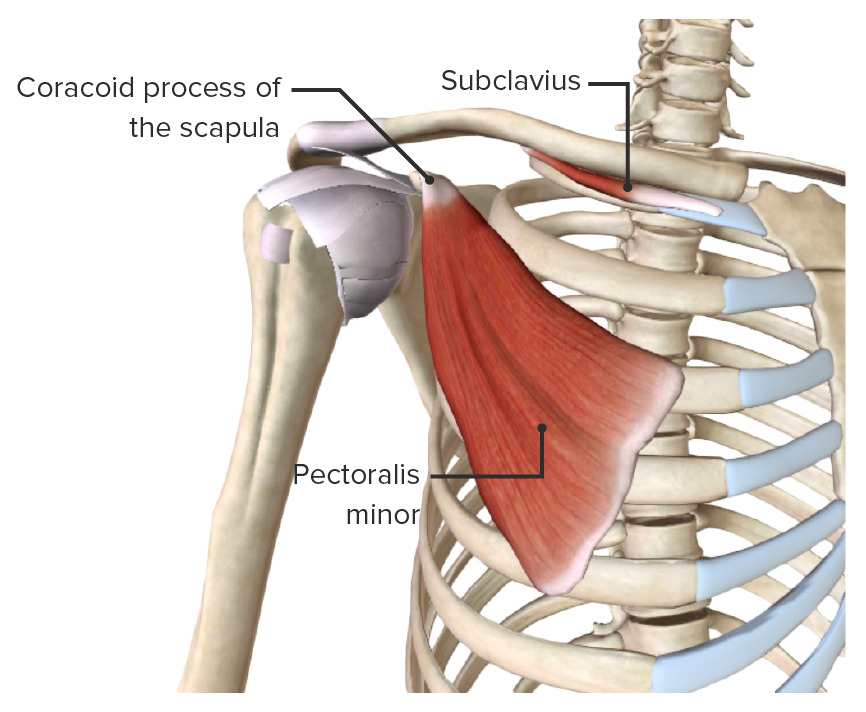Playlist
Show Playlist
Hide Playlist
Acromioclavicular Joint – Joints of Upper Limb
-
Slides 09 UpperLimbAnatomy Pickering.pdf
-
Download Lecture Overview
00:01 Now let’s move over to another joint, the acromioclavicular joints. 00:06 The acromioclavicular joint is between the acromion of the scapula to the clavicle - we've got the acromioclavicular joint here and this is stabilized by a number of ligaments. 00:20 The joint capsule, we can see the joint capsule of the acromioclavicular joint here contains a small wedge-shaped articular disc and the acromioclavicular ligament reinforces the join superiorly so here we can see the acromioclavicular joint and we can see the acromioclavicular ligaments and that is reinforcing the joint. 00:46 This acromioclavicular joint is supported by the coraco-acromial ligament and this prevents the acromion from passing deep to the clavicle. 00:57 So here we have the clavicle here and here we have the acromion and here we have the coracoid process. 01:04 And running between the coracoid process to the acromion is the coraco-acromial ligament and this prevents the acromion here passing deep underneath the clavicle, it helps to stabilize again this acromioclavicular joint. 01:22 We also have the coracoclavicular ligament and the coracoclavicular ligament as its name suggests reinforces this acromioclavicular joint again but is running from the coracoid process to the clavicle and there's actually two parts of it. 01:42 The coracoclavicular ligament, it anchors the clavicle to the coracoid process and augments its supports the acromioclavicular joint. 01:52 The two parts to it are the conoid ligaments - we can see the conoid ligament passing away here, passing medially from the coracoid process passing towards the clavicle. 02:05 And here we've got the coracoclavicular ligaments again, we've got the trapezoid ligament, we've got the second part of coracoclavicular ligaments and these two parts - the conoid ligament, the trapezoid ligament - you should remember the features on the inferior surface of the clavicle that we pointed out, these two parts - two parts - the conoid and the trapezoid, help to reinforce, help to augment the acromioclavicular joints. 02:35 Movement at this joint, we have rotation on the acromial end of the clavicle and this is due to the contraction of the thoracoappendicular muscles, muscles that are passing from the thorax to the appendicular skeleton. 02:50 These can move the upper limb at this acromioclavicular joints so we can have rotation so forward, backward, lateral rotation and some of the movements that are possible.
About the Lecture
The lecture Acromioclavicular Joint – Joints of Upper Limb by James Pickering, PhD is from the course Upper Limb Anatomy [Archive].
Included Quiz Questions
Which ligament has parts called the conoid and trapezoid ligaments?
- Coracoclavicular
- Coracoacromial
- Acromioclavicular
- Coracohumeral
- Costoclavicular
Which ligament reinforces the acromioclavicular joint superiorly?
- Acromioclavicular
- Coracoacromial
- Coracoclavicular
- Costoclavicular
Customer reviews
5,0 of 5 stars
| 5 Stars |
|
5 |
| 4 Stars |
|
0 |
| 3 Stars |
|
0 |
| 2 Stars |
|
0 |
| 1 Star |
|
0 |




